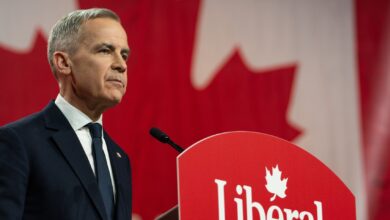 Supplied
SuppliedWith the Canadian federal election race in full swing ahead of election day on April 28, different parties have been using social media extensively in their campaigns. The New Democratic Party (NDP) has had content creators on its campaign bus. Meanwhile, the Conservative Party of Canada (CPC) is only really posting clips from rallies or campaign stops. Regardless of how each party uses social media, all forms of social media campaigning come with risks. But I’d argue the benefits outweigh them.
There’s been concerns of misinformation, use of artificial intelligence (AI), and deep fakes going into our election. These concerns are a real part of social media. Parties can easily clarify misconstrued information by actively posting their content and platforms to social media. Parties can set the record straight about their platforms and communicate directly with voters through social media. If anything, not effectively using social media can allow for more misinformation to spread.
Parties posting their own content doesn’t always make things clear, though. The NDP often uses memes and trends in its content, making it harder to tell when it is the actual party’s content or not. People might not necessarily assume videos of the party’s platform over Minecraft parkour footage and other similar content to be the NDP’s.
However, the risk that their content might not seem like real posts from the party is relatively minor. The benefit of the posts is that they encourage political engagement in a more entertaining and accessible way. And that’s the goal.
On the CPC side of things, they’ve kept to only posting content about rallies and more traditionally professional content. The party has also stayed off TikTok.
Generally, no matter what parties post, their own content online encourages more Canadians to get politically involved. It also allows for public forums, though that varies from platform to platform. Instagram comment sections aren’t much more than the party’s own supporters seconding whatever’s posted. TikTok comment sections, on the other hand, tend to be more of a public forum for people to discuss their concerns. Having a place to do so is an important part of the political process.
Their platforms being available online also helps to limit misinformation and enable accessible discussion. This allows for people’s opinions to change and develop. It can also possibly pull more Canadians into the discussion and into political activity in general.
This itself does have its own drawbacks as well though. With bots being prevalent online, it is hard to know if the comments in the comment sections are real. University of Alberta professor Darcie DeAngelo detailed that any sort of engagement feeds into bots. This unfortunately means that engaging with online political content can fuel bots.
Canadians are on guard for misinformation, which is a good thing. But unfortunately, it’s led some people to go after legitimate posts that aren’t AI or misinformation. Some accused the Liberal Party of using AI to make a rally look like it had more attendees than it did, leading CBC to debunk the claims. While Canadians questioning what they see online is good, it presents a risk for parties. What they post online is likely to be questioned and may not be believed.
Overall, I would say parties campaigning online leaves less room for misinformation and allows for public discussion, ultimately making it a valuable campaign strategy and tool of the democratic process.




